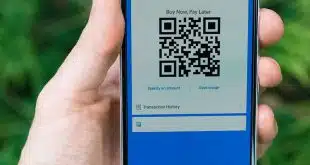Amazon.com Inc.’s venture in letting consumers pay with the palm of their hand officially launched Tuesday at two Amazon Go stores. But the retailing giant’s latest payment technology could face an uncertain future even as stores struggle with how to introduce contactless methods in the face of the Covid-19 pandemic.
The new service, dubbed Amazon One, is now live at two Amazon Go stores in the company’s home city of Seattle, including the original store. For now, the service is being used as an alternative way to identify customers as they enter the store. Using a special terminal designed by Amazon, customers insert a payment card while holding their hand over the device, which allows Amazon to associate the card with the unique palm print.
While identification is the immediate purpose, point-of-sale payment is clearly in view, and not just for Amazon. “In most retail environments, Amazon One could become an alternate payment or loyalty card option with a device at the checkout counter next to a traditional point of sale system,” says Dilip Kumar, vice president of physical retail and technology at Amazon, in a blog post Tuesday.

Customers don’t need an Amazon account to use Amazon One. They do need a mobile phone number and a payment card. “But if you choose to use your Amazon account with Amazon One, you can log in on our website to securely manage your information and see your usage history,” Kumar adds in his post.
While Amazon clearly intends to market the palm ID technology to other merchants, no further details about plans for such deployments were immediately available. Moves to market the service to other retailers would not be out of character for Amazon, which already offers a quick-click service called Amazon Pay for other e-commerce sellers. Besides Amazon Go stores, the service could potentially be deployed at the more than 400 stores in the Whole Foods grocery chain, which Amazon owns. “We also plan to offer the service to third parties like retailers, stadiums, and office buildings,” Kumar’s post says.
Details about the online giant’s plans for palm authentication first emerged in January, when The Wall Street Journal reported the company had enlisted Visa Inc. to run tests on the palm-reading devices.
While the technology represents an ambitious and technically advanced move toward easing payments, experts point out that prior efforts to enlist biometrics for payments have run into obstacles. One prominent example was that of Solidus Network Inc.’s Pay By Touch effort, which more than a decade ago allowed consumers to pay in stores with a fingerprint.
By early 2008, the venture had about 600 stores using its point-of-sale system. But Solidus Networks went bankrupt, and in March that year abruptly shut down its network. To be sure, Solidus faced challenges that were largely unrelated to its technology, including alleged mismanagement and financial headaches resulting from a buying spree that included acquisitions of transaction processors and another biometric-payment firm.




